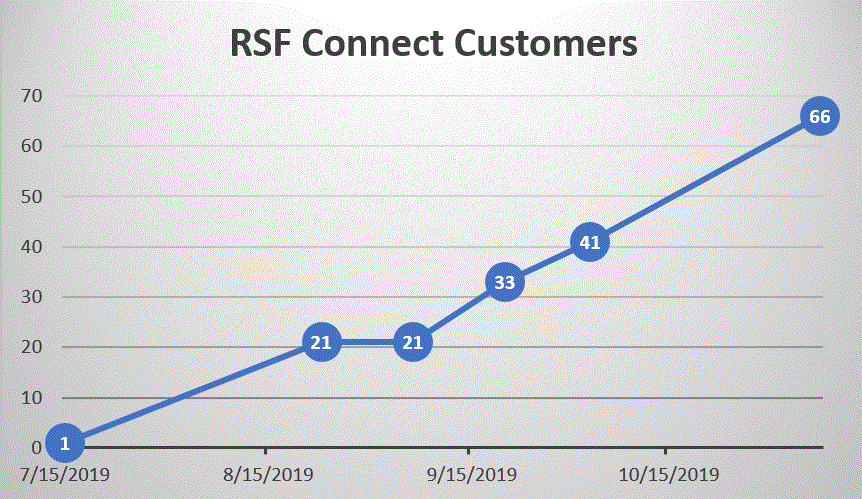From the MyRSF.net archives of the RSF Post
RSF Connect Update: Backward Incentives Edition
Author: Phil Trubey
Date: November 16, 2019
"Daaaaad - our streaming show Mom and I are trying to watch is slow. Can you fix it?"
I hear that way too often. It's coming, I say. Just a few more months before we can hook up to the fiber. But is it really only going to be a few more months?
I ran the numbers, and here's what the chart of total number of customers connected over time looks like. These numbers are based on numbers the Association has given us in various Board and meeting updates (latest update was at last week's Board meeting):

It works out to just over one installation per business day, or about 25 per month. And you don't have to be a math genius to see that this rate has held constant since Race started doing installs. I again asked one of the people responsible for the network after last week's Board meeting whether or not we are going to pressure Race to add more installation personnel. What I got back was a litany of reasons why installations are slow, but no commitment to pressure Race.
You might remember that at October's Board meeting, the Association was looking to have 40 new installations done in October, 60 in November and 80 in December. We got 25 in October.
Unless Race and the Association figure things out, we're all going to get really tired of reading these stories about how slow the rollout has been. I'm in the last installation zone, and it will take two years to get my service at this current installation rate.
Backwards Incentives
The backbone installation, headed by HP Communications, went faster than I expected. The customer installations, headed by Race, are going slower than I expected. Do contract incentives have anything to do with this?
As I recall from when I was on the Technology committee, Race was given a guaranteed minimum monthly revenue. Six months after first install, the Association must pay them the difference between Race's monthly revenue and $35,000 for two years. If installs continue at this pace, the Association will pay Race about $22,000 monthly starting in February, an amount declining by about $2,000 a month until Race's installs have caught up to equal that $35,000 monthly revenue guarantee.
I am not accusing Race of dragging their feet on installs, but it strikes me that they will make more profit if they did drag their feet. They would have to hire/allocate fewer resources to RSF Connect, while making more money per customer.
Got Race TV?
I am close to publishing an article about the state of Television today as it is in massive flux. Race's TV offering is part of this, but I have yet to find anyone who has signed up for and has used Race's TV offering. If you are using Race TV, please let me know, I'd love to get your impressions of it.
100 Mbps Is Now The Minimum
Bringing this back to the first line of this article, I have a high quality, but lowish speed Internet connection myself at 30 Mbps. A year ago, this speed connection didn't cause any issues, but that has changed in the past year. The Internet backbone and infrastructure has improved so much that if any of my many household computers, iPads or iPhones is downloading a software update, it swamps my connection, making watching streaming TV unwatchable. I would estimate that you now need a minimum 100 Mbps connection to have a no-compromise Internet link.
Solana Beach to get Gigafied
Looks like we built our gigabit network just in the nick of time. Ting Internet just announced they are bringing all fiber gigabit Internet to Solana Beach next year, with Encinitas soon to follow. Gigabit Internet is fast becoming the new must have.

 Chronicles
Chronicles